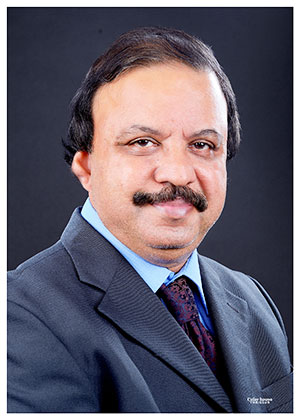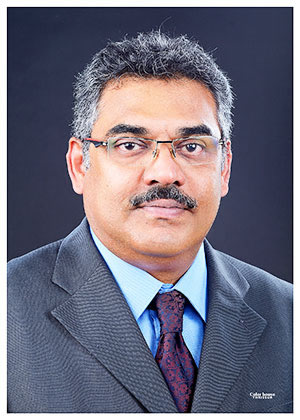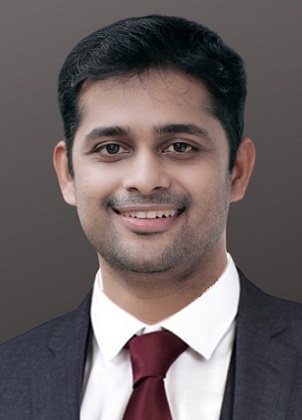Imagine being unable to lift your arm, move your fingers, or feel a simple touch on your skin. It sounds scary, right? For people suffering from brachial plexus injuries, this is their everyday reality. Whether it’s from a bike accident, a fall, or even a difficult birth, injuries to the brachial plexus can have life-changing consequences. But here’s the good news—if you’re looking for expert care and a chance at full recovery, you’ll find one of the best places for treatment right here in Kerala.
Let’s talk about the condition, the hope, and most importantly, the best brachial plexus hospital in Kerala—Sushrutha Institute of Plastic, Reconstructive & Aesthetic Surgery (SIPRAS) in Thrissur.
What Is the Brachial Plexus?
Let’s start with the basics. The brachial plexus is a complex network of nerves that originate from the neck and extend through the shoulder and into the arm and hand. These nerves control both movement and sensation in your upper limb. If these nerves are stretched, compressed, or torn, it can lead to partial or complete loss of function in the affected arm.
It might sound like something rare, but brachial plexus injuries are more common than you think, especially in road traffic accidents involving two-wheelers—something we sadly see a lot of in India.
Types of Brachial Plexus Injuries
Understanding the type and severity of injury is key to finding the right treatment. Brachial plexus injuries can range from mild nerve stretching to complete nerve root avulsion from the spinal cord.
Here are the main types:
Neuropraxia – Mild injury where the nerve is stretched, not torn.
Rupture – The nerve is torn but not at the spinal attachment.
Avulsion – Most severe; nerve is torn from the spinal cord.
Neuroma – Scar tissue forms at the site of the injury, disrupting signals.
Each type needs a different approach, and that’s why expert diagnosis and care are so important.
Common Causes of Brachial Plexus Injuries
So, how do these injuries happen? Some of the most common causes include:
Road traffic accidents, especially motorbike crashes
Falls from height
Complicated childbirths (Erb’s palsy in newborns)
Sports injuries, particularly in contact sports
Tumors or inflammation that compress the nerve
No matter the cause, timely and expert intervention can make all the difference between lifelong disability and a return to normal function.
Symptoms That Shouldn’t Be Ignored
If you—or someone you know—has experienced a trauma and now notices any of the following symptoms, it’s crucial to seek immediate medical attention:
Weakness in the shoulder, arm, or hand
Loss of sensation
Paralysis in part or all of the arm
Sharp, burning pain
Muscle atrophy (shrinking)
Early diagnosis can often mean better recovery, especially if surgery is required.
Why You Need a Specialist
Treating a brachial plexus injury is not like treating a regular fracture or sprain. These are delicate, complex nerve injuries that need highly specialized surgical skills, advanced equipment, and a well-coordinated rehab team. And that’s why you need to choose your hospital wisely.
The Gold Standard: Sushrutha Institute of Plastic, Reconstructive & Aesthetic Surgery (SIPRAS), Thrissur
Now let’s come to the heart of the matter. When we talk about the best Brachial Plexus hospital in Kerala, Sushrutha Institute of Plastic, Reconstructive & Aesthetic Surgery, located within Elite Mission Hospital in Thrissur, deserves a special spotlight.
SIPRAS has emerged as one of the most trusted centers in South India for nerve and microsurgery. Their team of dedicated plastic surgeons, microsurgeons, and rehab experts have been successfully treating complex brachial plexus injuries for over a decade.
Here’s what makes them truly stand out.
What Makes SIPRAS the Best Choice?
1. Experienced Surgeons
The team includes some of Kerala’s most experienced plastic and reconstructive surgeons. They’ve handled hundreds of complex nerve injuries with consistently excellent outcomes. When it comes to nerve grafting, nerve transfers, or neurolysis, their hands are steady, experienced, and precise.
2. Dedicated Microsurgery Operating Theatres
Operating on the brachial plexus is like working with spider webs under a microscope. SIPRAS has state-of-the-art microvascular surgical suites that allow their surgeons to work with high precision.
3. Comprehensive Rehabilitation
Surgery is just one part of recovery. At SIPRAS, the patient journey includes intensive physical therapy, occupational therapy, and long-term follow-up. The rehab team works alongside the surgical team, ensuring patients regain not just movement, but strength and confidence.
4. 24×7 Emergency Services
Because trauma doesn’t check the clock, SIPRAS offers round-the-clock emergency care. Their surgeons are available on-call to handle urgent nerve and trauma cases.
5. A Human Touch
Beyond the surgical precision, what makes SIPRAS truly special is their patient-first approach. From the moment you walk in, you’re treated with warmth, respect, and care. Patients constantly highlight the team’s willingness to explain, reassure, and walk with them through the healing process.
What Recovery Looks Like
Recovery from brachial plexus injury surgery isn’t overnight—it’s a journey. Depending on the severity of the injury, full recovery may take months to years. But with consistent rehab, emotional support, and expert follow-up care (all of which SIPRAS provides), many patients return to active, fulfilling lives.
Flexible EMI Options for Your Peace of Mind
We understand that undergoing advanced surgical procedures—especially for complex conditions like brachial plexus injuries—can be a significant financial decision. That’s why Sushrutha Institute of Plastic, Reconstructive & Aesthetic Surgery offers EMI (Equated Monthly Installment) options to make quality care more accessible for everyone.
Whether you’re considering nerve reconstruction, microsurgery, or long-term rehabilitation, our flexible payment plans are designed to ease your burden without compromising on the expertise or technology you receive. From consultation to recovery, our team is here to support you medically and financially.
To know more about our EMI facility or to check your eligibility, feel free to contact us at +91 62389 44054 or +91 80757 63612, or email sushruthainstitute@gmail.com. We’re committed to helping you heal—without the added stress of financial strain.
Why Patients from Across India Choose SIPRAS
Every year, patients from Tamil Nadu, Karnataka, Maharashtra, and even the North East travel to Thrissur for treatment at SIPRAS. Why? Because of:
Affordable, high-quality care
Availability of all treatments under one roof
Renowned reputation in nerve surgery
Patient-centric approach that feels like home
Not Just Treatment—Education and Awareness
SIPRAS doesn’t just focus on treating patients—they also educate the public. From awareness campaigns on helmet use to online consultations and second opinions for brachial plexus injuries, they’re committed to spreading knowledge and reaching people early.
Frequently Asked Questions
1. What is a brachial plexus injury?
A brachial plexus injury occurs when the network of nerves that sends signals from the spinal cord to your shoulder, arm, and hand is stretched, squeezed, or torn. Sushrutha Institute of Plastic, Reconstructive & Aesthetic Surgery offers expert diagnosis and treatment for all types of brachial plexus injuries.
2. What are the common symptoms of a brachial plexus injury?
Typical symptoms include sharp, burning pain radiating from the neck down the arm, weakness or limpness of the shoulder, arm, or hand, numbness or loss of sensation, and muscle atrophy. At Sushrutha Institute of Plastic, Reconstructive & Aesthetic Surgery, patients receive comprehensive evaluations to identify these signs early.
3. What causes brachial plexus injuries?
The most frequent causes are motor vehicle collisions, falls from height, sports injuries, and complicated childbirth. Sushrutha Institute of Plastic, Reconstructive & Aesthetic Surgery specializes in both adult trauma and neonatal Erb’s palsy cases.
4. How is a brachial plexus injury diagnosed?
Diagnosis involves a thorough physical exam, imaging studies like MRI or CT scans, and electrophysiological tests such as EMG and nerve conduction studies. Sushrutha Institute of Plastic, Reconstructive & Aesthetic Surgery has advanced imaging and electrodiagnostic facilities on-site.
5. What treatment options are available for brachial plexus injuries?
Mild cases may improve with medications and physical therapy, while severe injuries often require surgical procedures like neurolysis, nerve grafting, nerve transfers, and muscle/tendon transfers. Sushrutha Institute of Plastic, Reconstructive & Aesthetic Surgery offers all these advanced microsurgical options.
6. When should I seek treatment for a suspected brachial plexus injury?
It’s crucial to get evaluated as soon as possible—ideally within weeks of injury—because earlier surgical intervention often yields better outcomes. You can consult the specialists at Sushrutha Institute of Plastic, Reconstructive & Aesthetic Surgery without delay.
7. What specialized surgeries does Sushrutha Institute of Plastic, Reconstructive & Aesthetic Surgery offer for brachial plexus injuries?
Sushrutha Institute performs decompression, neurolysis, nerve grafting, nerve transfers, and muscle/tendon transfers using high‑magnification microsurgical techniques to restore function and sensation.
8. What rehabilitation services are provided after brachial plexus surgery?
Post-operative care includes personalized physical therapy, occupational therapy, and regular follow‑up by a multidisciplinary team. Sushrutha Institute of Plastic, Reconstructive & Aesthetic Surgery’s rehab program is tailored to each patient’s needs for optimal recovery.
9. How experienced is the surgical team at Sushrutha Institute of Plastic, Reconstructive & Aesthetic Surgery?
The department comprises seven full-time plastic surgeons with over 15 years of experience in microvascular and nerve surgery. They have successfully treated hundreds of brachial plexus cases since the institute’s founding in 2007.
10. How can I schedule a consultation at Sushrutha Institute of Plastic, Reconstructive & Aesthetic Surgery?
You can book an appointment by calling +91 62389 44054 or +91 80757 63612, or by emailing sushruthainstitute@gmail.com. Sushrutha Institute is located at Elite Mission Hospital, Koorkenchery, Thrissur, Kerala 680007.









